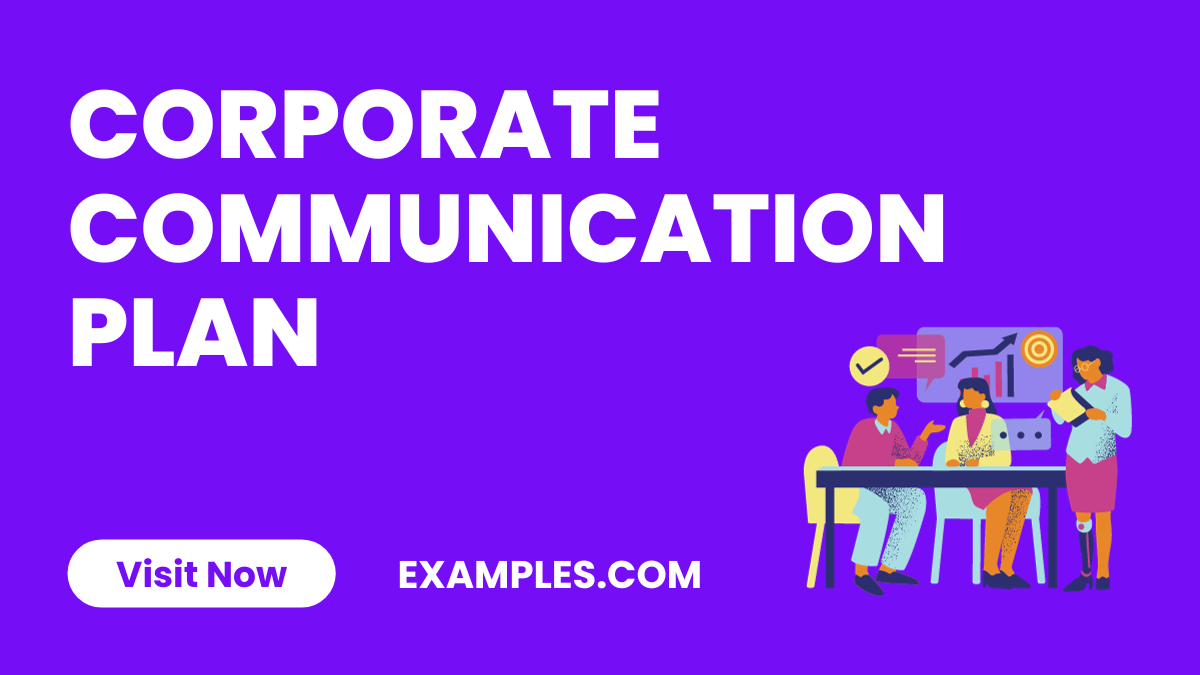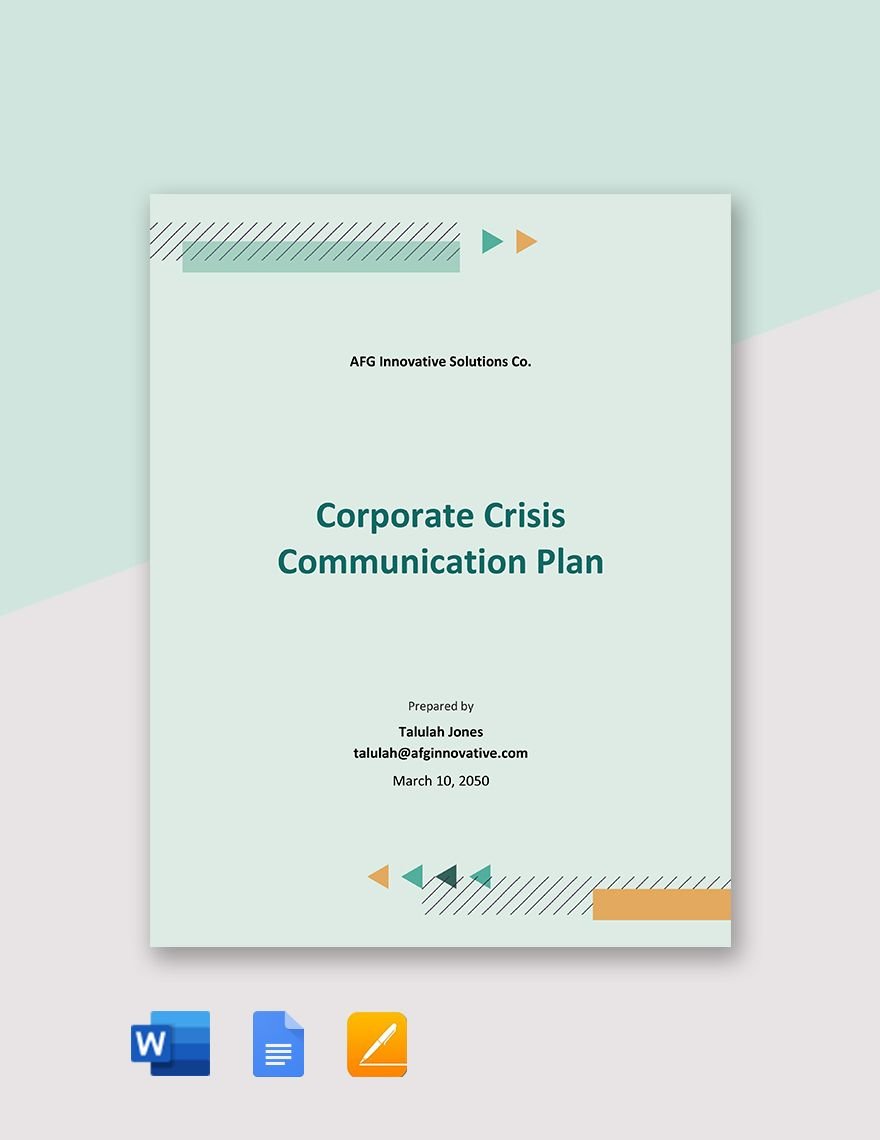7+ Corporate Communication Plan Examples
Discover the essentials of a successful Corporate Communication Plan with our comprehensive guide. Delve into real-world communication examples that illustrate effective strategies in business environments. From enhancing internal communication to navigating complex stakeholder interactions, this guide provides insightful techniques and practical examples. Ideal for businesses aiming to streamline their communication processes and achieve their strategic communication objectives. Stay ahead in corporate communication with this enlightening read.
Download Corporate Communication Plan Bundle
Corporate Communication Plan

The Corporate Communication Plan guide. It covers various aspects such as communication objectives, target audience identification, choosing effective communication channels and tools, key message development, and role assignments. The plan emphasizes practical implementation, including a timeline and methods for measuring and evaluating the effectiveness of communication strategies. A special focus is given to crisis communication planning, ensuring preparedness for any unforeseen scenarios. This resource is ideal for those looking to establish a structured and efficient communication framework within their organization.
Corporate Internal Communication Plan
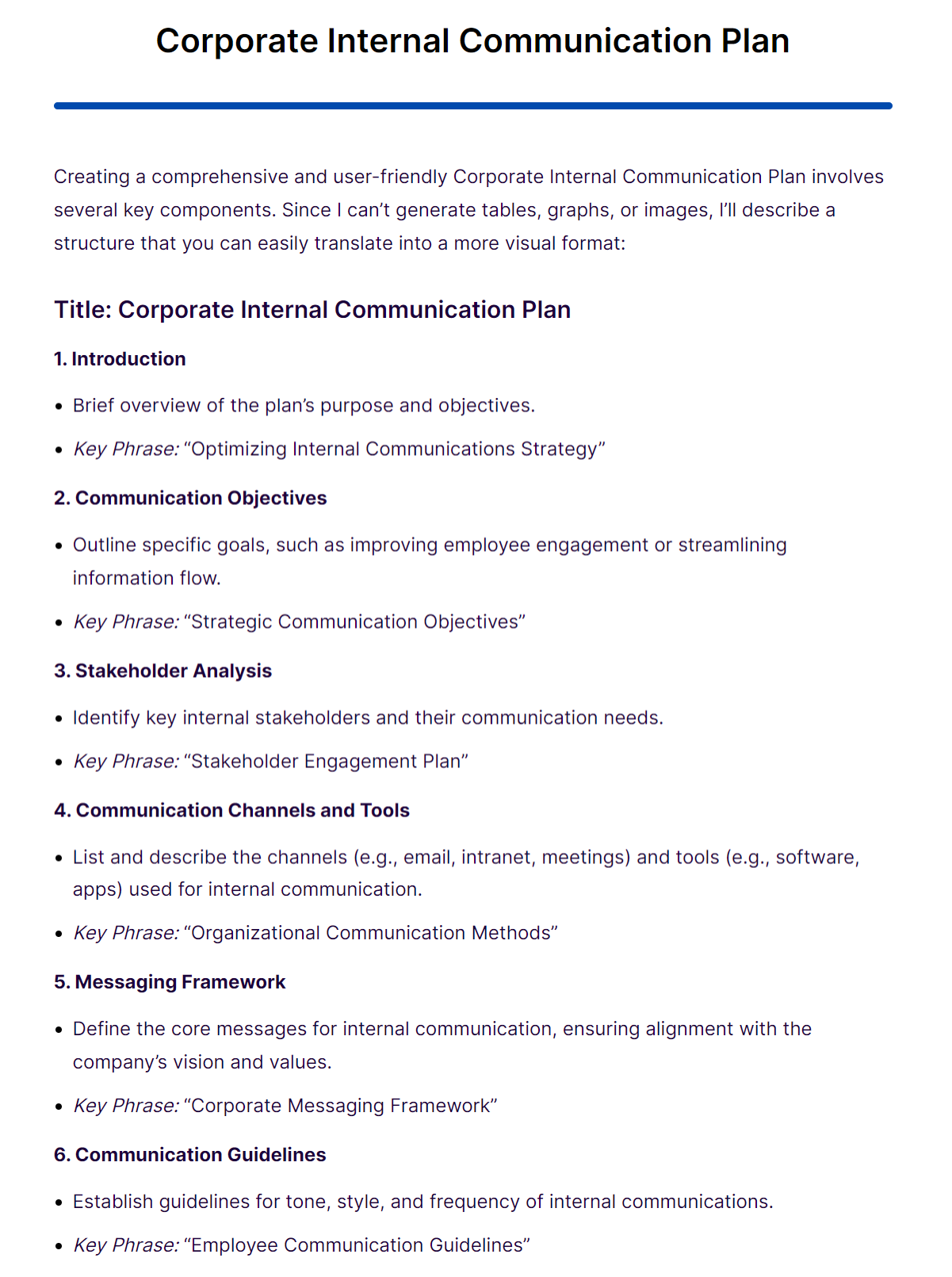
The Corporate Internal Communication Plan offers a detailed guide on developing an internal communication strategy within a company. It covers key components like setting communication objectives, identifying stakeholders, choosing communication channels, and establishing messaging frameworks. The guide emphasizes the importance of aligning internal communication with company values and vision, ensuring effective information flow, and preparing for crisis communication. This comprehensive resource is ideal for businesses looking to enhance their internal communication efficiency.
Corporate Compliance Communication Plan

The Corporate Compliance Communication Plan provides a detailed framework for ensuring that all employees within an organization understand and adhere to company policies and regulations. It outlines the objectives, target audience, key messages, communication channels, content strategy, methods for evaluation and feedback, implementation timeline, and responsible parties. This plan is crucial for maintaining legal compliance and ethical standards in a corporate setting, fostering a culture of transparency and accountability.
Corporate Crisis Communication Plan

The Corporate Crisis Communication Plan offers a detailed guide for businesses to manage communications during crises. It outlines the roles of a crisis communication team, identifies potential crises like natural disasters and cyber attacks, and suggests effective communication channels such as social media and press releases. The plan includes a structured crisis communication protocol, strategies for key message development, and methods for monitoring and feedback. It emphasizes the importance of regular updates and support for employees during crises, and the need to regularly review and update the communication plan.
Corporate Crisis Communication Plan Template in Word, Google Docs, PDF, Apple Pages
Corporate Communications Strategic Plan
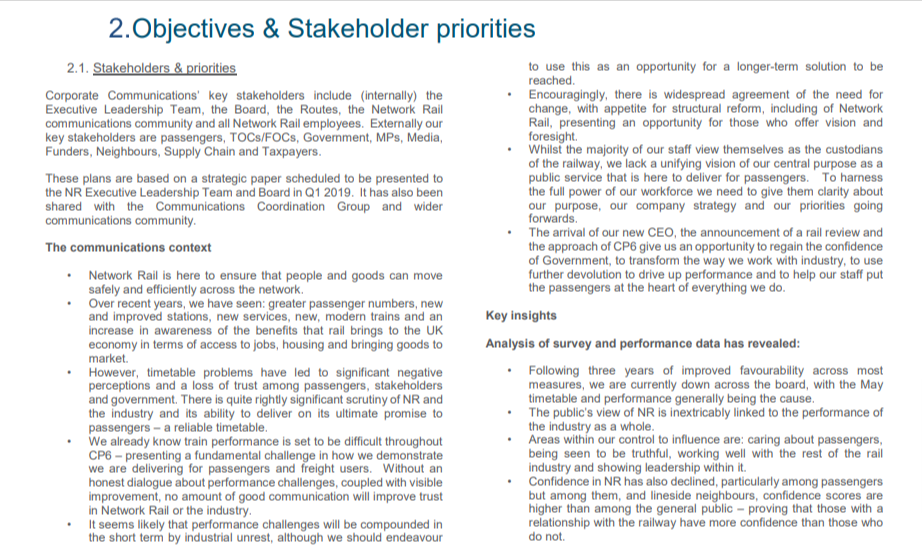
networkrail.co.uk
DownloadCorporate Reputation and Communication Plan
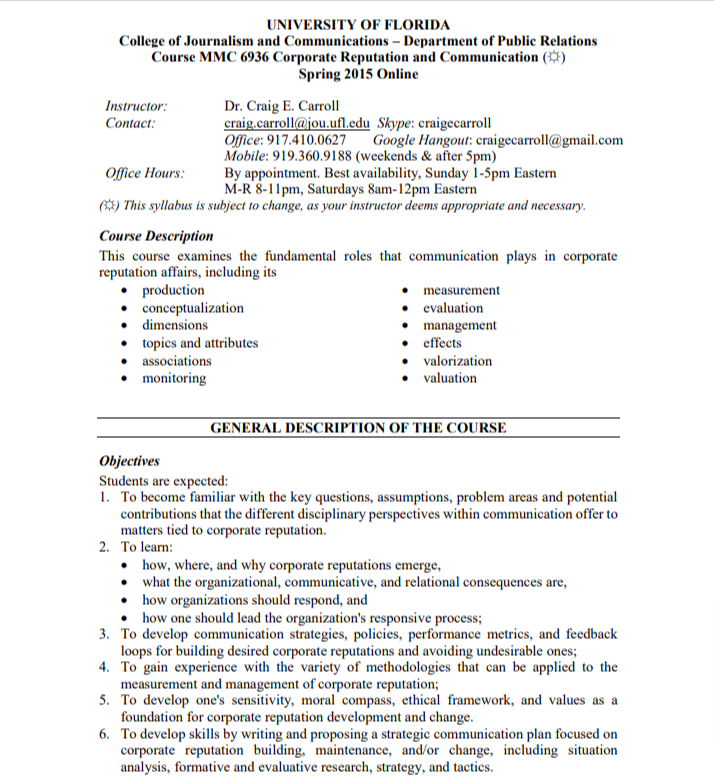
jou.ufl.edu
DownloadWhat is the Corporate Communication Plan of a Company?
A Corporate Communication Plan is a strategic blueprint that guides a company’s communication efforts with its internal and external stakeholders. This plan is pivotal in shaping how a business conveys its values, objectives, and messages to different audiences, including employees, clients, investors, and the public.
- Identification of Key Messages: Determining the primary messages the company wishes to communicate. This could range from its mission statement to specific branding messages.
- Audience Analysis: Understanding the target audience for each message, which could include employees, clients, or the wider public.
- Communication Channels Selection: Deciding the most effective channels to reach the audience, whether through internal newsletters, press releases, social media, or company meetings.
- Tactical Execution Plan: Outlining specific actions, such as organizational communication methods and timings for message dissemination.
- Crisis Communication Protocols: Establishing procedures for crisis communication management, ensuring quick and effective responses to potential challenges or negative situations.
- Measurement and Evaluation: Implementing tools to measure the effectiveness of communication strategies, through methods like employee feedback, media analysis, or survey responses.
- Continuous Improvement: Updating and refining the communication plan based on feedback and evolving company needs.
Building an Effective Corporate Communication Plan Strategy
Creating an effective Corporate Communication Plan Strategy is essential for aligning business goals with communication efforts. This strategy involves identifying key messages, selecting the right communication channels, and engaging with stakeholders in a meaningful way. It’s about ensuring that every communication reflects the company’s values and objectives, thereby strengthening its brand and internal cohesion.
Annual Shareholder Meeting: Convey company achievements and future goals.
This year, we’ve seen remarkable growth in our overseas markets, paving the way for exciting new ventures in the upcoming year.
Employee Newsletter: Update staff on company news and events
We’re thrilled to announce our latest product launch, a testament to our team’s hard work and innovation.
Press Release for Product Launch: Announce new products to the public.
Our latest product offers cutting-edge solutions, reflecting our commitment to excellence and innovation.
Crisis Management Statement: Address issues or crises affecting the company.
We are actively managing the situation and are committed to transparency and rectifying the issue promptly.
Social Media Campaign: Engage with customers and promote brand identity.
Join our journey of innovation and sustainability – your support drives our continuous improvement.
Internal Training Session Announcement: Inform employees about training opportunities.
Enhance your skills with our new training programs, designed to foster professional growth and development.
Customer Feedback Survey Email: Collect customer feedback.
Your opinion matters! Help us improve by sharing your experience with our products.
Corporate Responsibility Report: Share company’s efforts in social responsibility.
Our latest report highlights our commitment to sustainable practices and community involvement.
Investor Relations Update: Keep investors informed about financial performance.
This quarter’s results reflect our strategic focus on innovation and market expansion.
Health and Safety Policy Update: Notify employees of changes in workplace safety protocols.
Your safety is our priority. Please review the updated health and safety guidelines effective immediately.
What Are the Types of Corporate Communication Plan?
Understanding the types of Corporate Communication Plans is crucial for businesses aiming to effectively manage their internal and external communications. These plans vary based on the target audience, purpose, and the nature of the message being conveyed. Here, we explore the different types of corporate communication plans, each serving a unique function in the corporate communication strategy.
1. Internal Communication Plan
This plan focuses on communication within the organization. It includes strategies for disseminating information to employees, ensuring everyone is informed about company policies, updates, and internal events. Tools like internal newsletters, intranets, and staff meetings are commonly used.
2. External Communication Plan
It deals with how a company communicates with external stakeholders such as customers, investors, and the media. This plan includes press releases, social media management, customer service protocols, and investor relations.
3. Crisis Communication Plan
Essential for managing communication during a crisis, this plan outlines how to communicate with various stakeholders during emergencies. It includes protocols for information dissemination, media relations, and maintaining public trust.
4. Stakeholder Engagement Plan
This plan is designed to build and maintain relationships with key stakeholders, including investors, partners, and influential community members. It involves regular updates, engagement activities, and feedback mechanisms.
5. Brand Communication Plan
Focused on conveying the company’s brand message and values, this plan includes marketing strategies, advertising campaigns, and corporate branding initiatives. It’s crucial for maintaining brand consistency across all platforms.
6. Change Management Communication Plan
This type of plan is vital during times of significant change within the organization, such as mergers, acquisitions, or major shifts in company strategy. It focuses on keeping employees informed and engaged during transitions.
7. Event Communication Plan
Tailored for specific corporate events, this plan outlines the communication strategy before, during, and after the event. It includes promotion, attendee engagement, and post-event feedback collection.
8. Integrated Communication Plan
This holistic approach combines various elements of communication plans to ensure a consistent message across all channels and departments. It aims to unify internal and external communications for greater impact.
How to Create a Corporate Communications Plan?
Creating a Corporate Communications Plan is a structured approach to delivering a company’s key messages to its various stakeholders, including employees, customers, investors, and the public. This plan is critical in ensuring that all communication is consistent, effective, and aligned with the company’s overall objectives.
- Define Your Communication Objectives: Begin by setting clear and measurable goals. What do you want to achieve with your communications? This could be enhancing brand awareness, improving employee engagement, or managing the company’s reputation.
- Identify Your Audience: Determine who your stakeholders are. Different audiences may require different types of communication. For example, the way you communicate with employees might differ from how you communicate with investors or customers.
- Develop Key Messages: Establish the core messages you want to convey. These should be aligned with your company’s values, mission, and vision, and tailored to your different audiences.
- Choose Appropriate Channels: Select the best channels to reach your audience. This could include internal channels like staff meetings or newsletters, and external channels like social media, press releases, or corporate events.
- Plan Content and Timing: Develop a content calendar. Plan what to communicate, when, and through which channels. Timing can be crucial, especially when dealing with time-sensitive information.
- Implement a Crisis Communication Strategy: Prepare for potential crises by developing a crisis communication plan. This includes identifying potential crises, crafting response strategies, and designating spokespersons.
- Monitor and Measure Effectiveness: Use tools and metrics to evaluate the success of your communication efforts. This might include employee feedback surveys, social media analytics, or media coverage analysis.
- Revise and Adapt: Based on the feedback and results, continually refine and update your communication plan. The corporate communication landscape is dynamic, so staying adaptable is key
Why is Having a Corporate Communications Plan Important?
In today’s fast-paced business world, having a Corporate Communications Plan is not just beneficial; it’s essential. This plan serves as the backbone for how a company communicates with its employees, stakeholders, and the public. It’s a strategic tool that ensures all communication efforts are aligned with the organization’s goals and objectives.
Key Reasons for the Importance of a Corporate Communications Plan:
- Brand Consistency: A corporate communication plan ensures that every piece of communication reflects the company’s brand, values, and mission consistently. This uniformity is crucial in building and maintaining a strong, recognizable brand identity.
- Effective Crisis Management: In times of crisis, having a predetermined crisis communication protocol is vital. It allows for quick, coordinated, and effective responses, helping to mitigate damage and maintain trust with stakeholders.
- Enhanced Employee Engagement: Clear and consistent internal communications foster a positive workplace environment. When employees are well-informed and feel included, it boosts morale, productivity, and loyalty.
- Streamlined Stakeholder Communication: A well-defined Stakeholder communication plan aids in effectively managing interactions with various stakeholders, including investors, customers, and partners. It helps in delivering tailored messages that resonate with each group.
- Strategic Alignment: A corporate communication plan aligns communication strategies with the overall business strategy, ensuring that all messaging supports the company’s strategic objectives and long-term vision.
- Crisis Anticipation and Preparedness: By anticipating potential issues and having a plan in place, companies can respond more efficiently and effectively, reducing the potential impact of a crisis.
- Measurement and Adaptation: The plan provides a framework for measuring the effectiveness of communication strategies and adapting them based on feedback and changing business needs.
- Competitive Advantage: Effective communication can be a significant competitive advantage. It enables businesses to stand out, convey their unique selling points clearly, and engage with their audience more effectively than competitors.
- Legal and Regulatory Compliance: Ensuring that all communications adhere to legal and regulatory requirements is crucial for avoiding penalties and maintaining a good corporate reputation.
- Managing Public Perception: A corporate communication plan helps in shaping and managing public perception, which is critical for maintaining a positive image and building public trust.
What Should A Corporate Communications Plan Include?
A Corporate Communications Plan is a strategic framework crucial for effective internal and external company communication. Key elements of this plan should include:
- Objectives: Define specific strategic communication objectives that align with the company’s overall goals.
- Target Audience: Identify the primary audience for the communication, whether employees, stakeholders, or the public.
- Key Messages: Develop consistent corporate messaging that reflects the company’s values and mission.
- Communication Channels: Select appropriate channels for disseminating messages, ranging from internal newsletters to social media.
- Stakeholder Engagement: Implement a plan for regular and effective stakeholder interaction.
- Crisis Communication: Include a protocol for managing communication during emergencies.
- Schedule and Budget: Outline a timeline and budget for communication activities to ensure consistent and well-resourced execution.
- Measurement and Feedback: Set methods to measure the effectiveness of communication and gather feedback for improvements.
- Review Process: Establish a regular review process to update and adapt the communication plan as needed.
The article “Corporate Communications Functions, Careers, and Skills” provides a comprehensive overview of corporate communications. It discusses the importance of effective communication in business, detailing various aspects such as customer and employee communication, public relations, and crisis management. The article also explores the different roles and functions within a corporate communications department and offers insights into the skills and careers associated with this field.
Corporate Communication plan Learning Goals outlines the objectives for students majoring in corporate communication. The goals encompass understanding and applying legal and ethical principles in corporate communication, developing effective communication strategies, mastering tactics and execution, and grasping the role of communication in business environments. It also emphasizes career skills, information literacy, and the historical context of the corporate communication profession.



